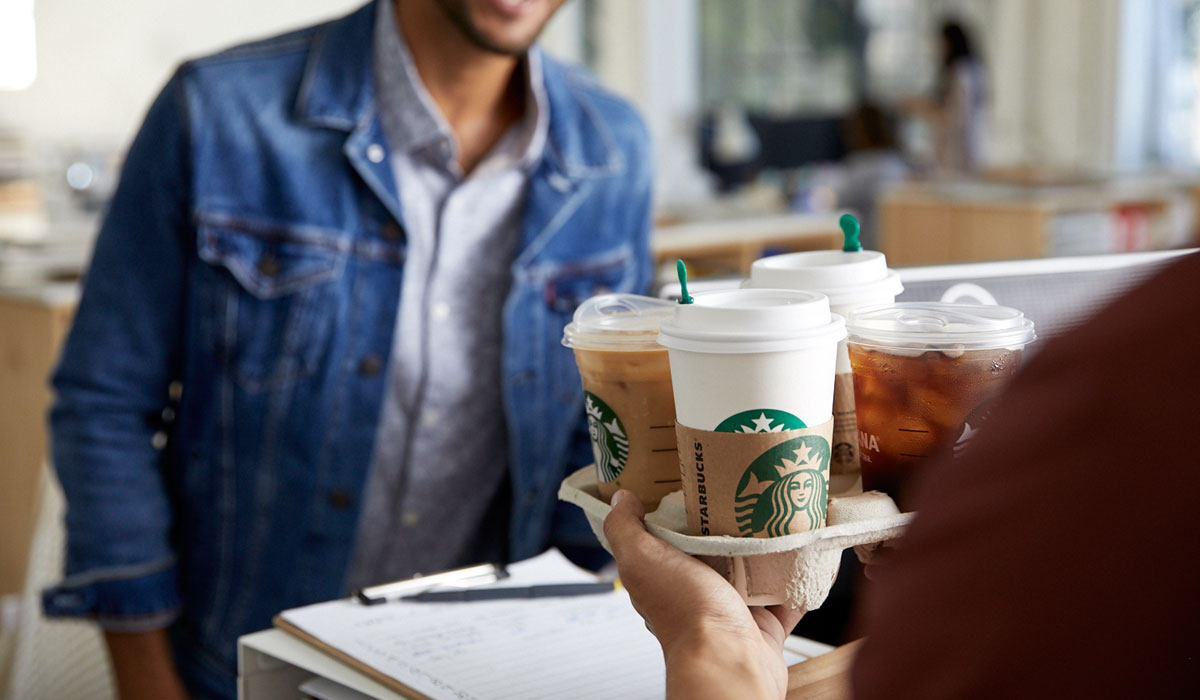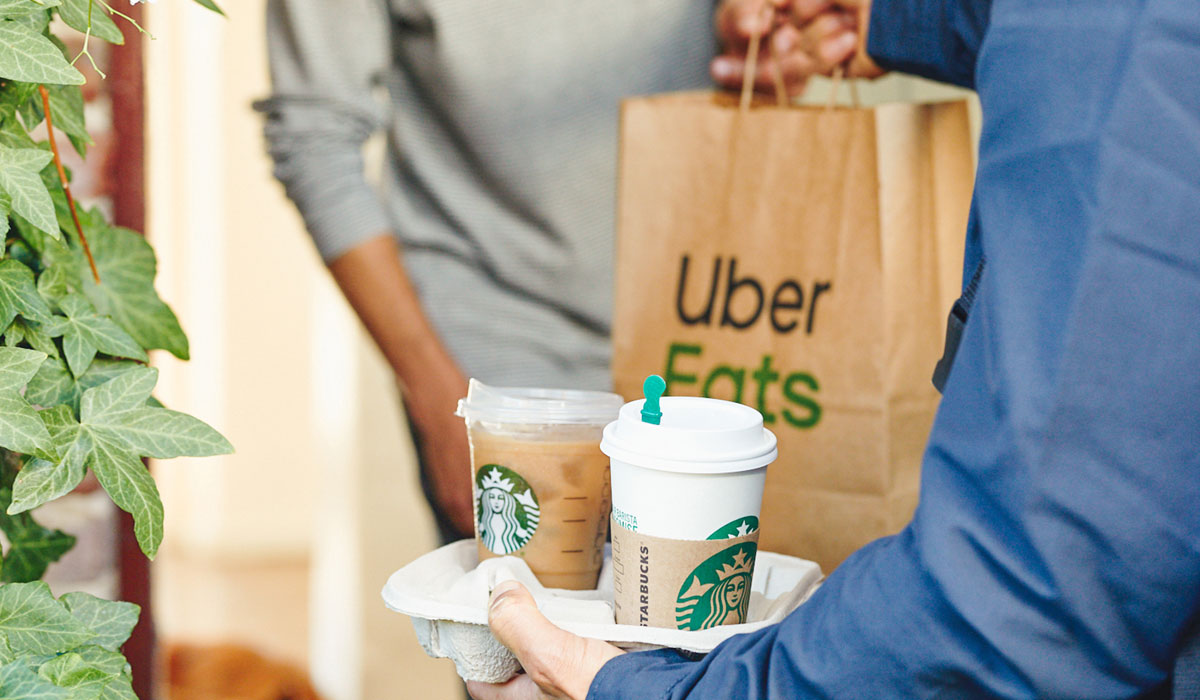At its investor conference in mid-December, Starbucks highlighted several key initiatives for 2019. A little over a month later, one of the more buzzy-worthy goals is ready to expand. Starbucks announced January 22 that its Starbucks Delivers program is spreading to six additional U.S. cities. The expansion, in partnership with Uber Eats, begins Tuesday in San Francisco. Next up, “in the coming weeks,” are Boston, Chicago, Los Angeles, New York, and Washington, D.C.
READ MORE: Delivery, remodels, and nitro await Starbucks in 2019.
Come spring, Starbucks Delivers will be live in seven U.S. cities, with the six fresh markets joining the initial Miami test. In total, Starbucks said it’s on track to bring the service to nearly a quarter of its U.S. company-operated stores. There were 9,684 corporate restaurants in the Americas as of September 30. It was 8,222 in the U.S. heading into the year. So that target amounts to roughly 2,000 Starbucks locations by Q2 of fiscal 2019 (March).
The South Florida pilot initially covered more than 100 restaurants in the Miami-Dade and Broward counties.
Starbucks said the test “saw strong demand, including repeat business throughout the day and positive feedback from customers.” It reported earlier that delivery orders returned average checks about two-and-half to three times higher than traditional in-store results (low-to-mid teens checks as opposed to the typical $5 order).
Delivery orders will come with an initial $2.49 booking fee, Starbucks said.
Additionally, the expansion coincides with the kickoff of a new pilot set to begin later this month: London will be the first European city to trial Starbucks Delivers via Uber Eats.
Starbucks’ delivery efforts in China are already rolling. As part of a partnership with Alibaba, Starbucks has worked with Ele.me, China’s leading on-demand food delivery platform with 3 million registered delivery riders, to bring the experience to market.
The company now offers delivery service in 11 of its global markets and expects to test other delivery pilots in other countries this year, it said.

Why is Starbucks diving in?
When the delivery expansion was first hinted, BTIG analyst Peter Saleh said they weren’t willing to discount the fact Starbucks didn’t forecast how delivery could boost same-store sales or speak directly to potential margin impact. Saleh suggested Starbucks could see “what we believe is a real risk of cannibalization.” It would also be “more difficult to asses just how incremental these transactions will be over time,” since Starbucks wouldn’t get access to customer-level data through its Uber Eats delivery transactions, he wrote. “That said, we do not expect Starbucks to be able to access this data any time soon as we believe it would require Uber customers opting in to sharing their information with brand partners,” Saleh added.
Starbucks said Tuesday it would “leverage Uber’s expertise as a quick and reliable delivery provider that is already well-established in offering customers a premier experience in a growing mobile and on-demand economy.”
It added the partnership would allow Starbucks to reach new customers who are using the Uber Eats platform, as well as offer existing customers a new method for including Starbucks in their daily routines.
“We know we have untapped customer demand for Starbucks Delivers in the U.S. and starting today, we’re expanding our best-in-class experience to our customers both in and out of our stores,” said Roz Brewer, group president and chief operating officer for Starbucks, in a statement. “We’re building on key learnings from past delivery pilots and by integrating our ordering technology directly with Uber Eats, we’ve unlocked the ability to bring Starbucks to customers for those times when they’re not able to come to us.”
Citing Statista data, Starbucks said the global online food delivery market currently represents a $95 billion opportunity and is projected to grow by more than 11 percent annually through 2023.
How it works
Starbucks Delivers is now live through the Uber eats mobile app. Key features include:
Quick, reliable delivery: Powered by the Uber Eats platform, customers can follow orders within the mobile app, tracking progress and location of their Uber courier to ensure proper delivery of their food and beverage items within 30 minutes. Starbucks has also developed packaging solutions to help ensure the quality of hot and cold menu items.
Customization: With about 95 percent of core menu items available directly from the Starbucks menu, customers will be able to customize their orders just as they would when ordering on Starbucks mobile apps.
“At Uber Eats, we’re always looking for new ways to offer people the widest selection of food they love. That’s why we’re so excited to deliver Starbucks fans their favorite food and beverages in a way that’s as easy as requesting a ride,” added Jason Droege, vice president and head of UberEverything, in a statement. “Be it breakfast delivered straight to the soccer field or afternoon lattés to the office, we know this partnership will delight our customers.”
Starbucks, which reports its first quarter fiscal 2019 results Thursday after the bell, is coming off its best quarterly performance in five periods. The chain posted same-store sales gains of 4 percent in the U.S. and Americas in Q4. Revenue upped 10.6 percent to a record $6.3 billion from $5.7 billion last year, and global same-store sales rose 3 percent.










